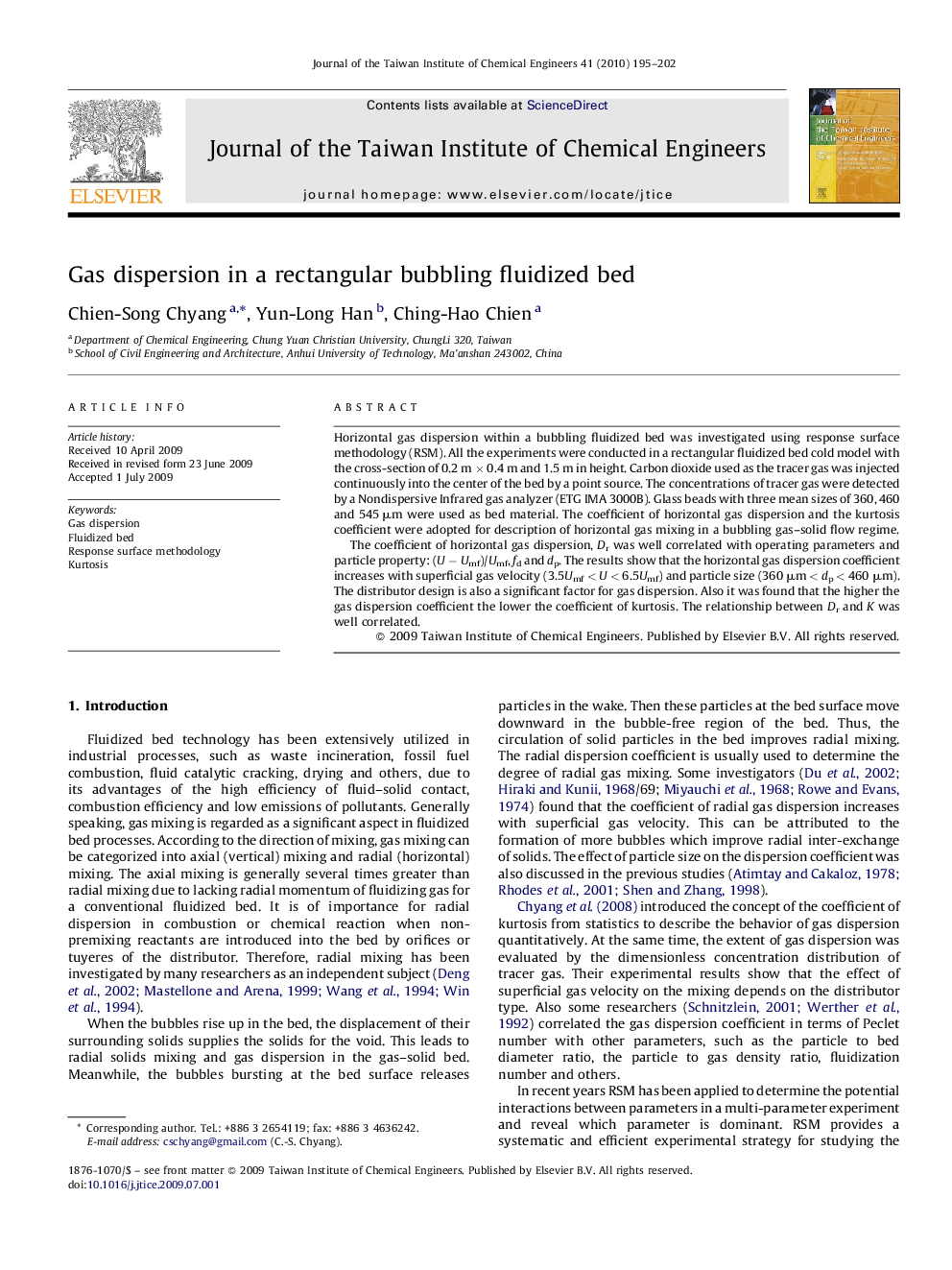| Article ID | Journal | Published Year | Pages | File Type |
|---|---|---|---|---|
| 691768 | Journal of the Taiwan Institute of Chemical Engineers | 2010 | 8 Pages |
Horizontal gas dispersion within a bubbling fluidized bed was investigated using response surface methodology (RSM). All the experiments were conducted in a rectangular fluidized bed cold model with the cross-section of 0.2 m × 0.4 m and 1.5 m in height. Carbon dioxide used as the tracer gas was injected continuously into the center of the bed by a point source. The concentrations of tracer gas were detected by a Nondispersive Infrared gas analyzer (ETG IMA 3000B). Glass beads with three mean sizes of 360, 460 and 545 μm were used as bed material. The coefficient of horizontal gas dispersion and the kurtosis coefficient were adopted for description of horizontal gas mixing in a bubbling gas–solid flow regime.The coefficient of horizontal gas dispersion, Dr was well correlated with operating parameters and particle property: (U − Umf)/Umf, fd and dp. The results show that the horizontal gas dispersion coefficient increases with superficial gas velocity (3.5Umf < U < 6.5Umf) and particle size (360 μm < dp < 460 μm). The distributor design is also a significant factor for gas dispersion. Also it was found that the higher the gas dispersion coefficient the lower the coefficient of kurtosis. The relationship between Dr and K was well correlated.
